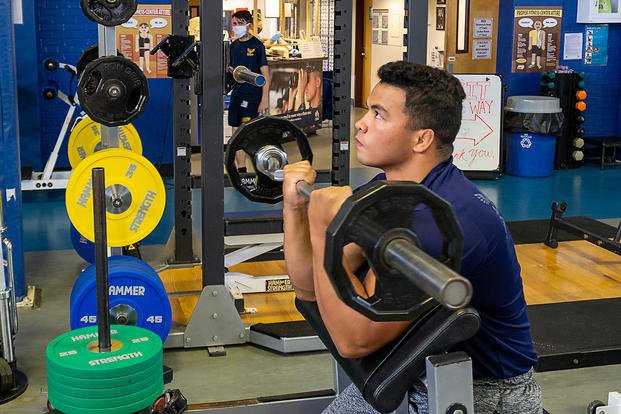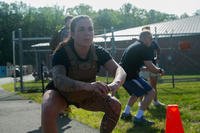Gaining weight is not a typical goal in the fitness community, so be careful what you wish for. In general, those who wish to gain weight do so for two reasons:
-
To gain mass for sport specific purposes (football linemen)
-
To build mass for bodybuilding.
If either of the above are your goals, there is a fairly reliable formula; eat everything that moves. Seriously. At a certain level, calories are calories -- and you need calories and protein to build muscle mass. But fat comes with those extra calories as well.
When athletes try to gain weight, they typically consume vast amounts of calories during a “bulking phase." They do this so that they have the baseline caloric intake to offset the calories burned by exercise.
But be careful. Most of these athletes "cut weight" after they have reached a certain goal. Fighters, particularly those jumping up in a weight class, are famous for doing this. Many of the Mr. Olympia candidates do this as well.
Have you ever seen a bodybuilder during a "bulking phase?" They look like a bowling ball with eyes. They are totally unrecognizable from the ripped look they have during competition. Bottom line: If you bulk up, you need to come down at some point. If your goal is to have perfect six-pack abs, you don't want to gain weight; you want to lose weight.
As a guideline, your body fat has to be under 10% to show your ab muscles.
Lots of younger athletes want to gain size, particularly for sports. Unfortunately, most of these athletes are fighting nature. Men and women in their early to late teens typically experience growth spurts. Loosely translated, they grow taller, not bigger. Your body grows at its own pace. Messing with your natural metabolism almost always does more harm in the long run.
Still want to gain weight? If you are interested in gaining muscle mass, try the following. First, monitor your caloric intake. Slowly increase your caloric intake until you start to gain more fat than muscle. Believe me, you will notice when this happens.
Eat good amounts of protein, fat from natural oils, and nuts and seeds. Carbohydrates should come from fresh fruit and veggies. Try to avoid processed foods and white flour products. If you increase your calories, eat more lean protein and good fat. Eat a minimum of six meals per day.
Second, change your workout routine. Watch the number of repetitions and the amount of cardio you do. High reps and lots of cardio actually can decrease your ability to gain muscle mass. Lift heavy, with good form, and get lots of rest. Stick with this for a while and modify as necessary. You will see some size increments but be patient.
Remember that gaining weight is oftentimes harder than losing weight.
– guest blogger Mike Ryan
Michael Ryan is the president and CEO of Intensity Nutrition LLC. Founded by former Navy SEALs, Intensity develops super-premium sports supplements for professional, semi-professional, tactical, and functional athletes. Ryan and Alden Mills met during "running remediation" at Basic Underwater SEAL (BUD/S) training.
Want to Learn More About Military Life?
Whether you're thinking of joining the military, looking for fitness and basic training tips, or keeping up with military life and benefits, Military.com has you covered. Subscribe to Military.com to have military news, updates and resources delivered directly to your inbox.



















